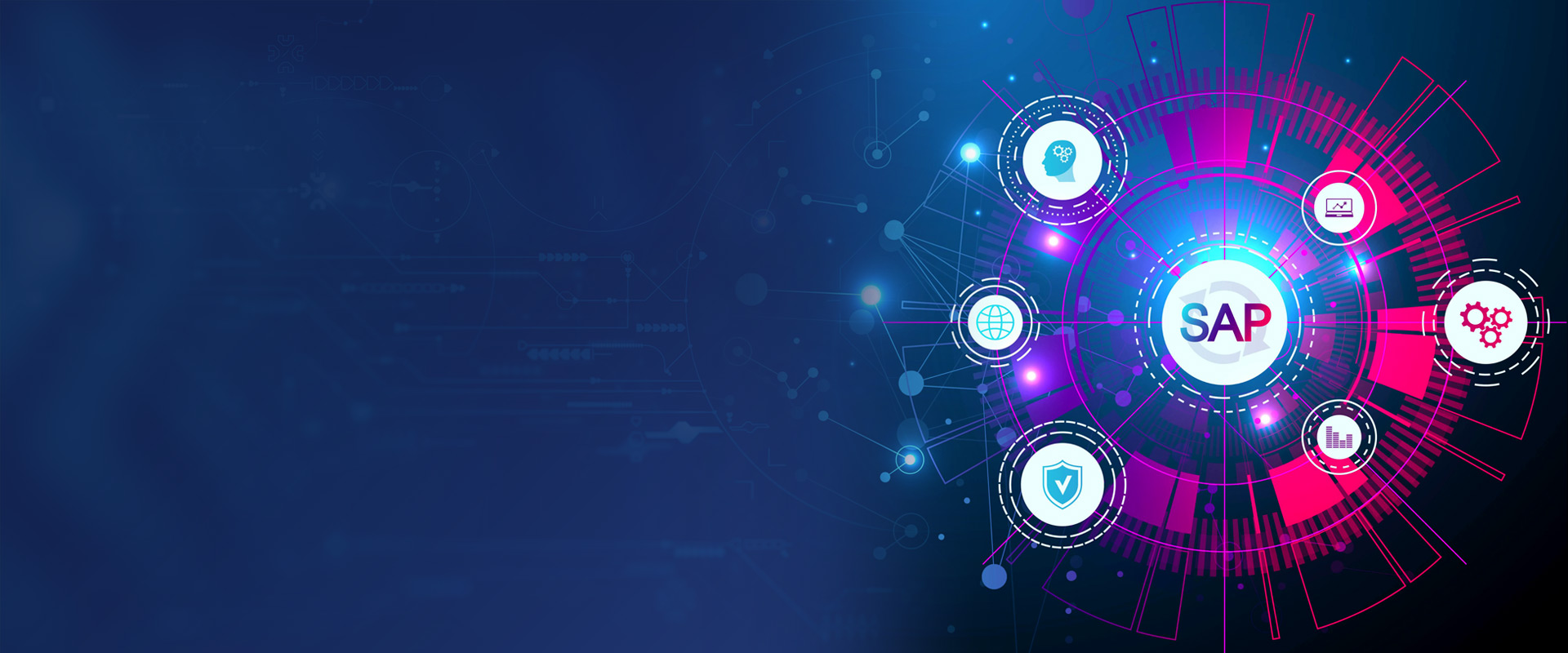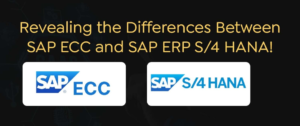
- Dec 11, 2023
How does SAP S/4HANA differ from SAP ECC?

SAP ECC (Enterprise Core Component) and SAP S/4HANA are both enterprise resource planning (ERP) solutions developed by SAP (Systems, Applications, and Products in Data Processing). However, they differ in several key aspects:
- Database Technology: SAP ECC: It traditionally runs on a relational database, such as Oracle, Microsoft SQL Server, or IBM Db2. SAP S/4HANA: It is built on the SAP HANA in-memory database platform. This allows for real-time data processing and analysis, resulting in improved performance and faster response times.
- Data Model: SAP ECC: It has a traditional row-based data storage structure.SAP S/4HANA: It utilizes a columnar storage structure, which is more efficient for analytical processing. This supports advanced analytics and reporting capabilities.
- User Experience: SAP ECC: The user interface is based on SAP GUI (Graphical User Interface). SAP S/4HANA: It provides a modern and intuitive user experience with the SAP Fiori user interface. Fiori is designed to be responsive, user-friendly, and accessible on various devices.
- Simplification and Innovation: SAP ECC: Over time, as businesses evolved, the ECC system became complex due to various customizations and modifications. SAP S/4HANA: It was developed with the aim of simplifying business processes. Many traditional functions and tables have been removed, and processes have been streamlined to make the system more agile and responsive to business needs.
- Integration Capabilities: SAP ECC: Integration with other systems and applications can be complex, and middleware is often required. SAP S/4HANA: It comes with enhanced integration capabilities and supports a more connected and intelligent enterprise.
- Industry Solutions: SAP ECC: Industry-specific functionalities are provided through add-on solutions. SAP S/4HANA: It includes industry-specific capabilities in the core system, reducing the need for additional add-ons.
- Deployment Options: SAP ECC: It can be deployed on-premises or in the cloud.SAP S/4HANA: It is designed to run primarily in the cloud, although on-premises deployments are also possible. SAP encourages customers to move to the cloud for the latest innovations and benefits.
- Licensing and Pricing: SAP ECC: Traditional licensing models based on user licenses and modules. SAP S/4HANA: Uses a simplified licensing model, often based on the number of users and the level of functionality required.
- Support and Future Roadmap: SAP ECC: SAP announced that mainstream support for ECC 6.0 would be extended until 2027, with optional extended support until 2030. SAP S/4HANA: SAP encourages customers to migrate to S/4HANA, and it is considered the strategic direction for SAP ERP. It receives continuous updates and new features as part of SAP’s commitment to innovation.
- New General Ledger (GL): SAP ECC operates on either a “classic” GL structure or the “new” GL structure. On the other hand, S/4HANA uses only the new GL.
- Customer vs. vendor to Business Partner: SAP ECC maintains separate customer and vendor files. S/4HANA combines common data structure elements into a Business Partner record.
- New Asset accounting: SAP ECC Fixed asset accounting has a single ledger approach for asset postings, but in SAP S/4 HANA New fixed asset accounting you can choose between the accounts and the ledger approach for asset postings. The asset reports are now using the CDS view for reporting purpose in S/4.
- Default Account-Based CO-PA: In SAP ECC: Costing-based CO-PA (CO-Profitability Analysis) is the default option. But in SAP S/4HANA, the default option is account-based CO-PA, though you can run both options together.
- FI and CO Merger: Businesses manage their financial data in SAP ECC with both FI (Finance) and CO (Controlling). In SAP S/4HANA, FI and CO are part of a single table in ACDOCA, the Universal Journal. This means you no longer have to reconcile them with the General Ledger at each period-end. ACDOCA reconciles them automatically in real-time, so period-end closings are simpler in SAP S/4HANA.
- Mandatory Material Ledger: The Material Ledger (ML) is another feature that’s optional in SAP ECC but mandatory in SAP S/4HANA. Most companies don’t activate the ML in SAP ECC due to frustration with the many aggregate and index tables. But in SAP S/4HANA, the ML is part of ACDOCA, so this frustration is now a thing of the past.
- MATDOC Inventory Management: SAP S/4HANA introduces MATDOC, a new inventory management system that eliminates over 26 tables present in SAP ECC. Now, material documents are stored in MATDOC instead of MKPF or MSEG tables. This removes redundancy and improves stock reporting efficiency
- FSCM Credit Management: FI-AR-CR was the credit management system in SAP ECC. In SAP S/4HANA, credit management falls under financial supply chain management (FSCM). Automated workflows in FSCM-CR remove manual processes for tasks like credit limit approval and risk scoring. Also, its distributed architecture means it can interface with external credit agencies directly.
- Revenue Accounting and Reporting (RAR): The SAP S/4HANA Revenue Accounting and Reporting (RAR) module replaces SAP ECC’s SD Revenue Recognition module. RAR is an add-on that’s based on the new, five-step revenue recognition model found in International Financial Reporting Standard 15 (IFRS 15). RAR comes with new optimized contract management capabilities to comply with IFRS 15. At the same time, it simplifies revenue recognition.
- SAP Fiori User Interface: SAP S/4HANA introduces a new user interface, SAP Fiori. SAP Fiori gives users a consistent, intuitive, and integrated experience. With SAP Fiori, you can get work done faster and more accurately. These speeds up onboarding and training and provides a better user experience. You can also create custom enterprise apps that work consistently across devices.
In summary, while SAP ECC has been a widely used ERP system for many years, SAP S/4HANA represents a more modern and streamlined approach to enterprise resource planning, leveraging in-memory computing and providing a foundation for digital transformation. Organizations are encouraged to plan their migration to SAP S/4HANA to take advantage of the latest technologies and innovations offered by SAP.